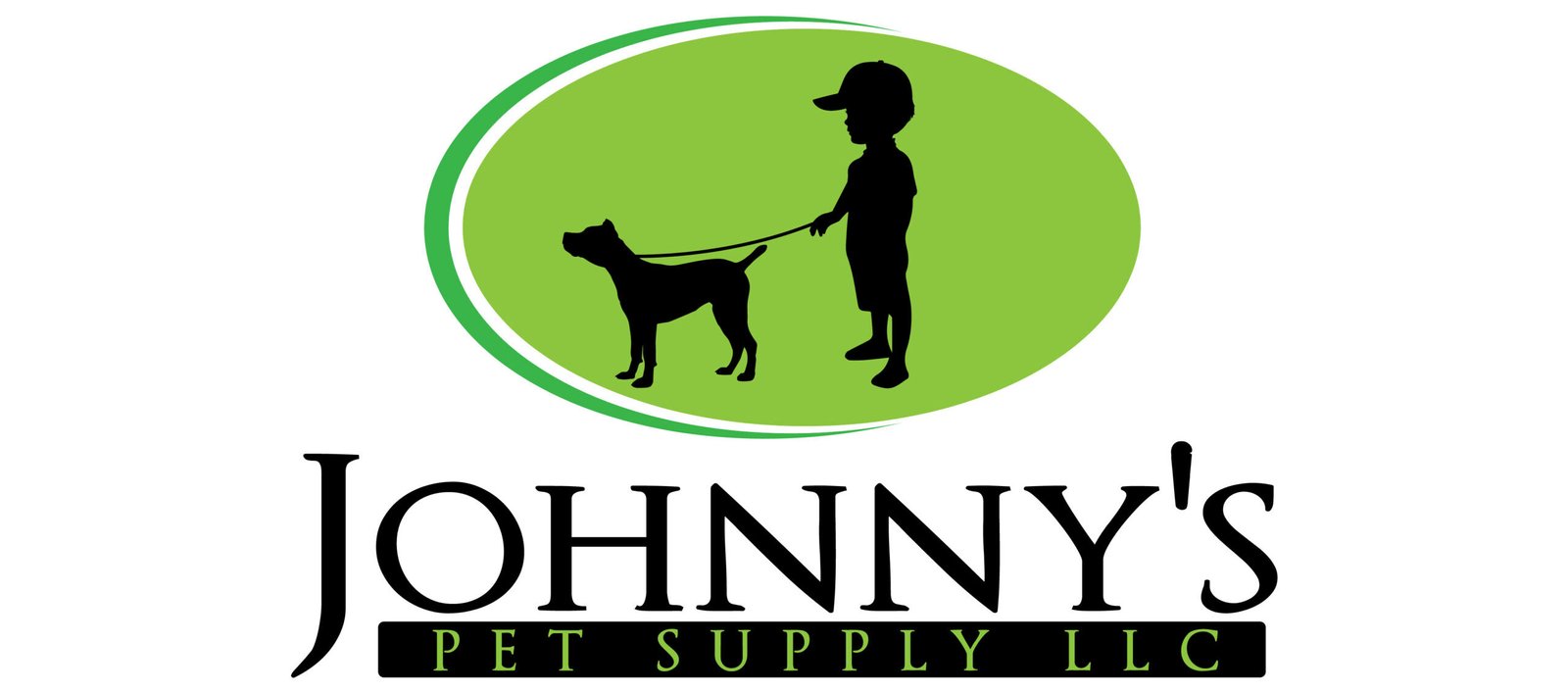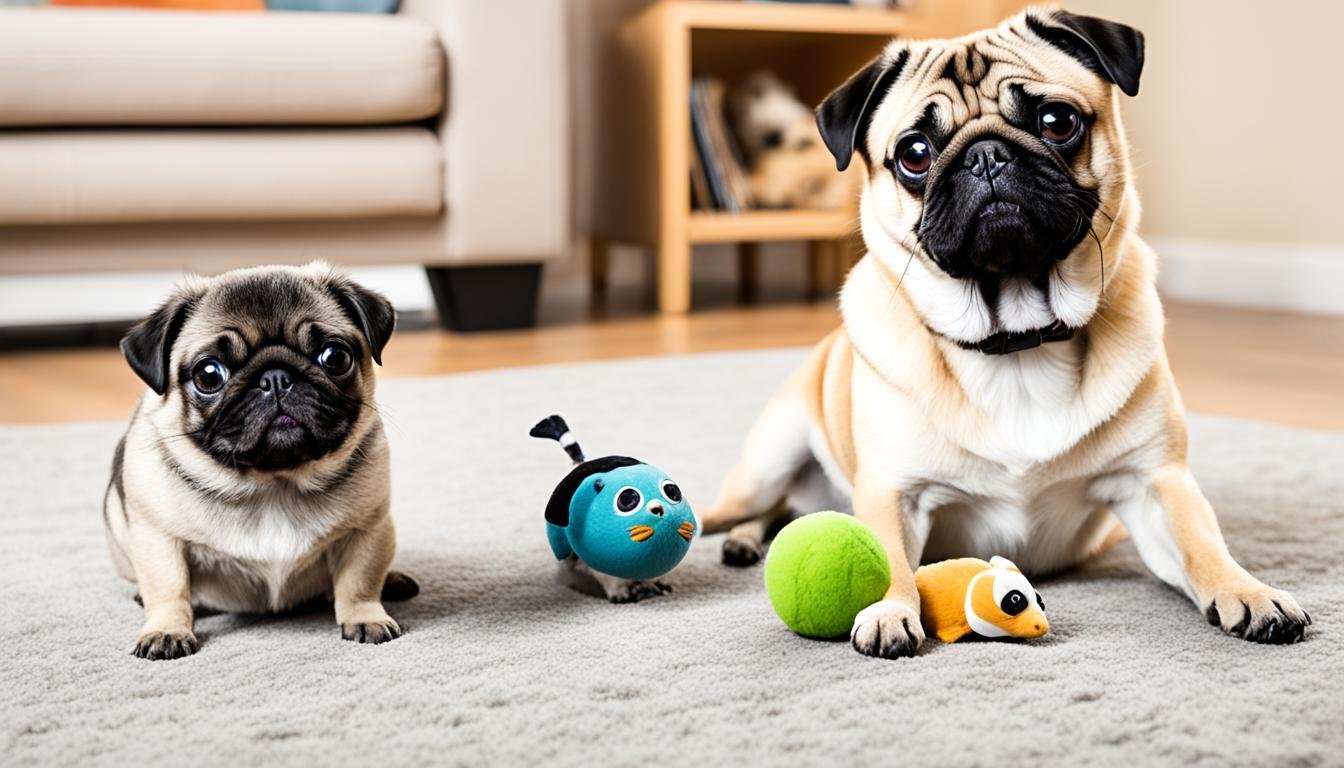How to avoid aggression in Pugs towards other pets
Have you ever seen your friendly Pug act mean to other pets? It’s important to know why this happens. Knowing what makes Pugs act out can help keep peace in your home with more pets. Many think aggression is just a bad trait. But, it can come from many things or behaviors.
In this article, I’ll share ways to stop your Pug from being aggressive. This way, your Pug and other pets can live together happily.
Understanding Pug Temperament and Aggression Triggers
Pugs are known for their charming personalities and playful nature. It’s important for owners to understand their temperament. Some things can make them act aggressively. It’s key to watch them closely and train them well.
Common Signs of Aggression in Pugs
It’s important to know when a Pug might get aggressive. Look for signs like mounting, blocking paths, standing tall, and certain sounds. These can mean they feel scared, want to be in charge, or are protecting their space. Spotting these signs early helps prevent problems.
The Role of Socialization in Pug Behavior
Socializing Pugs is key to their behavior. Not meeting other pets and people early can make them anxious and aggressive. By taking my Pug to different places and meeting new friends, I help them be calm and friendly. This makes our home happier for everyone.
How to avoid aggression in Pugs towards other pets
Managing aggression in Pugs takes more than watching them. I set a clear order in my home for peace. This order helps my pets know their place in the family. It stops fights before they start.
It’s key to manage pug dominance for a calm home.
Establishing a Stable Hierarchy in Multi-Pet Households
Starting with regular routines helps pets know their spots. I give each pet its own area for eating, sleeping, and playing. This way, they know where they fit in and get along better.
Having a leader is important. I make rules that everyone follows. This keeps things peaceful and cuts down on fights.
Managing Resource Competition Among Pets
Competition over things like food can make Pugs fight. I feed my pets separately and give each their own toys. This stops them from fighting over stuff.
Watching them play and keeping an eye on their actions helps a lot. It’s my way of stopping dog fights.
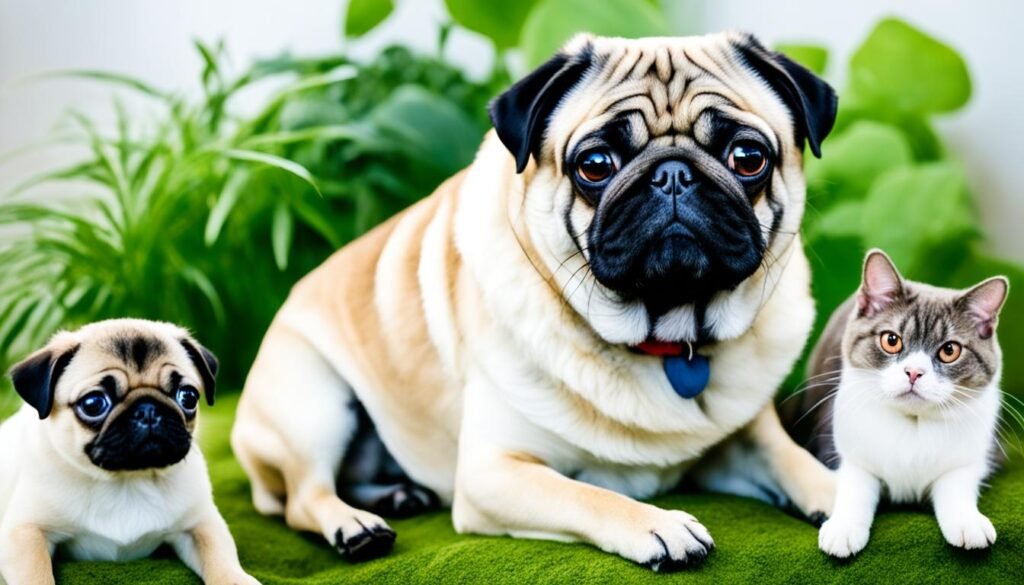
Pug Behavior Training Techniques for Reducing Aggression
Training is key to handling *puggy aggression*. I use structured programs to make a safe home for my Pug and other pets. The “Nothing in Life is Free” program and positive reinforcement help me tackle aggression and encourage good behavior.
Implementing the “Nothing in Life is Free” Program
The “Nothing in Life is Free” program is great for training my Pug. It makes my Pug work for rewards like treats, toys, or hugs. This teaches my Pug to respect me and understand what I want.
It also helps reduce aggression and builds a team spirit between us.
Positive Reinforcement and Obedience Training
Positive reinforcement goes well with the “Nothing in Life is Free” program. When my Pug does what I ask, I give it treats or praise. This makes my Pug feel good and encourages calm behavior.
With patience and hard work, my Pug gets better at listening and shows less aggression. It becomes more obedient over time.
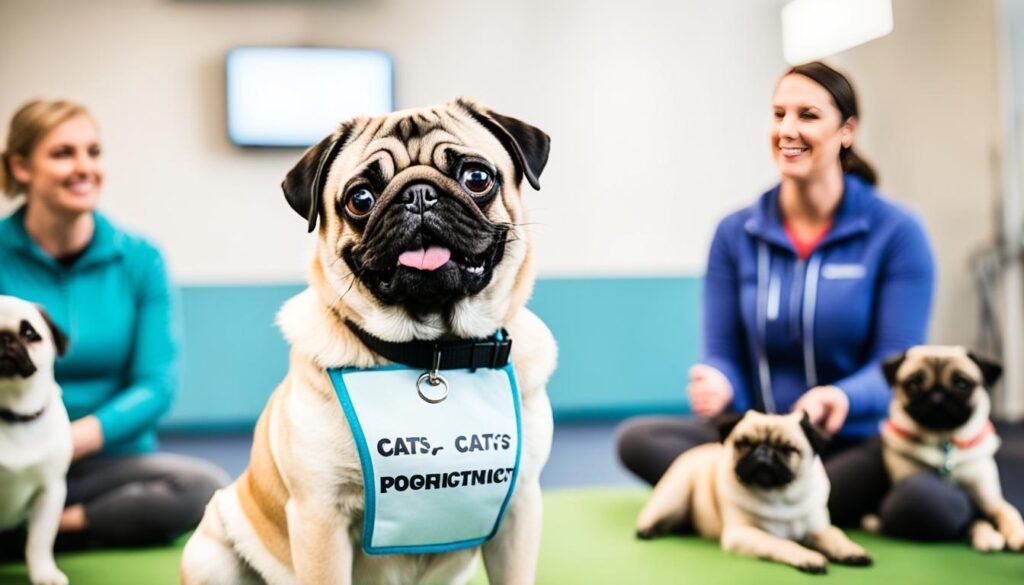
Effective Socialization Strategies for Pugs
Socializing pugs is key for their happiness and getting along with other pets. Slowly introducing them to new friends or places helps lower stress and fights. I’ve seen that taking time to introduce my pug to other animals makes things calmer. This way, my pug and other pets get along better.
Gradual Introductions to Other Pets
Being patient is important when meeting new pets. I start with short, happy meetings in a neutral spot. I watch my pug’s body language to see if he’s okay. If he looks stressed, we stop and try again later.
This slow way helps my pug get used to other pets without feeling scared or bossy. It’s important for keeping the peace.
Utilizing Controlled Interactions and Supervision
Having controlled meetings is key to socializing pugs well. I watch over every meeting to stop any trouble. At first, I keep my pug on a leash to keep him safe but let him sniff around.
This helps my pug make good friends and behave well in different places.
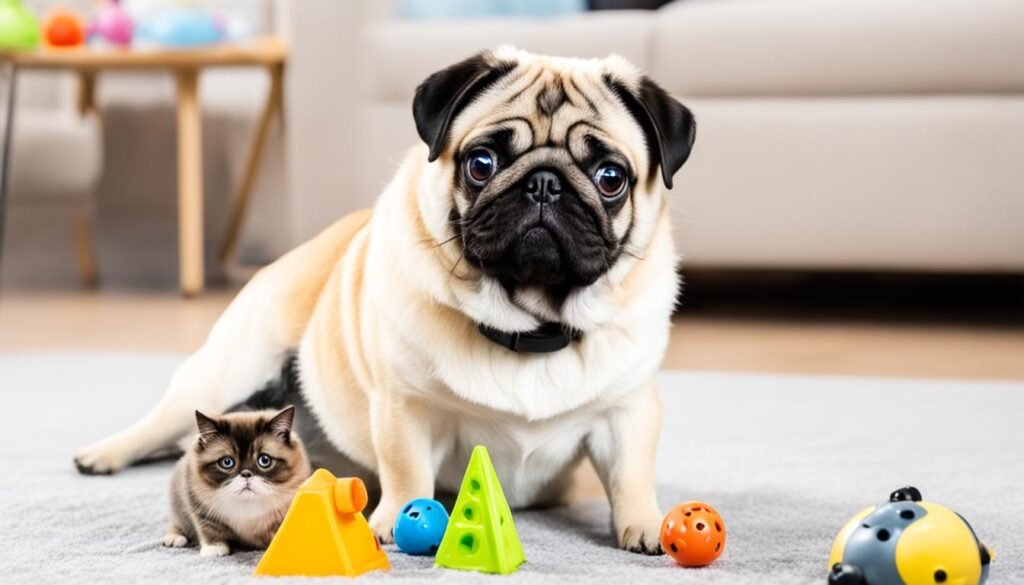
Long-Term Solutions for Managing Pug Dominance and Aggression
Managing pug dominance and keeping peace in the home is key. I make sure my Pug follows a regular routine. This includes training sessions to keep their behavior good.
It also lets me see how my Pug is doing. I can stop aggression before it starts. This makes peace last between my Pug and other pets.
For long-term solutions, I focus on socializing my Pug. I slowly introduce them to new places and pets. This is very important early on.
Quick action is crucial for solving behavior issues. It helps stop dog fights and lessens rivalry. This makes our home more peaceful.
Sometimes, getting help from a vet or dog trainer is a big help. They give advice and ways to change behavior that fits my Pug. These tips work well with what I do at home. This leads to a happy life for my Pug with other pets.
